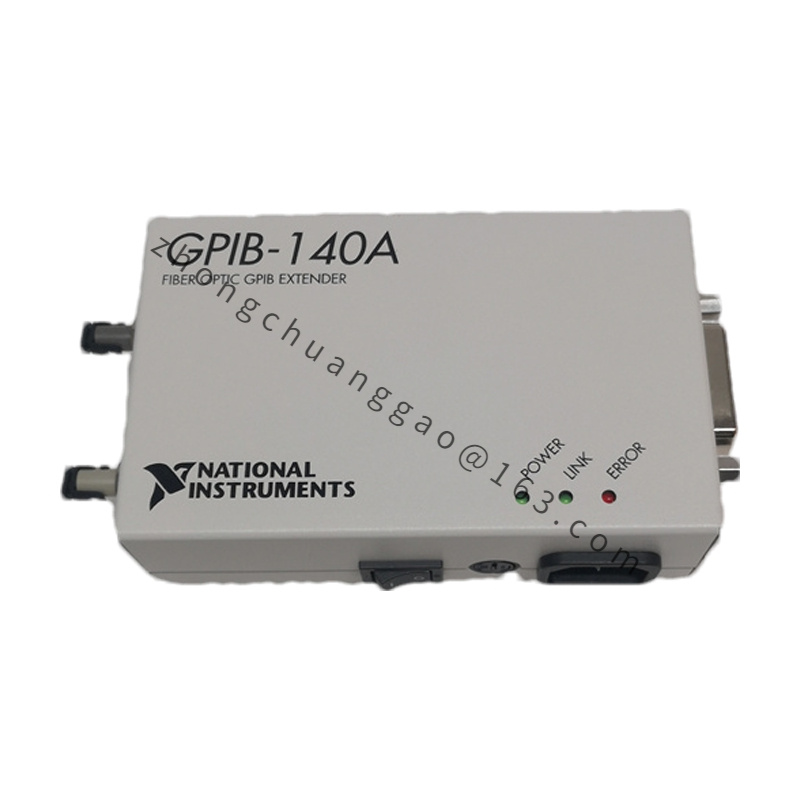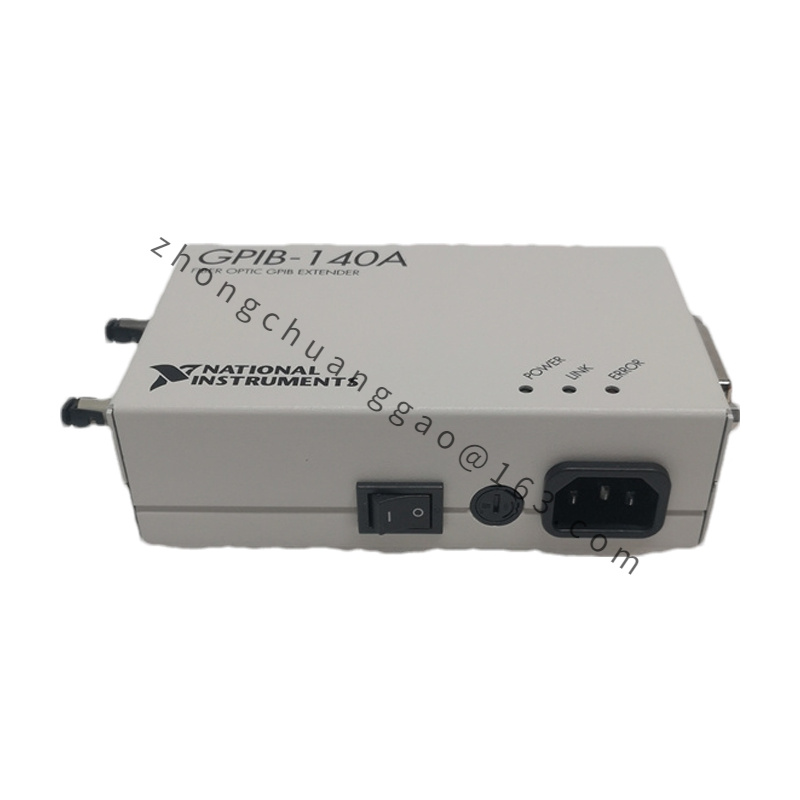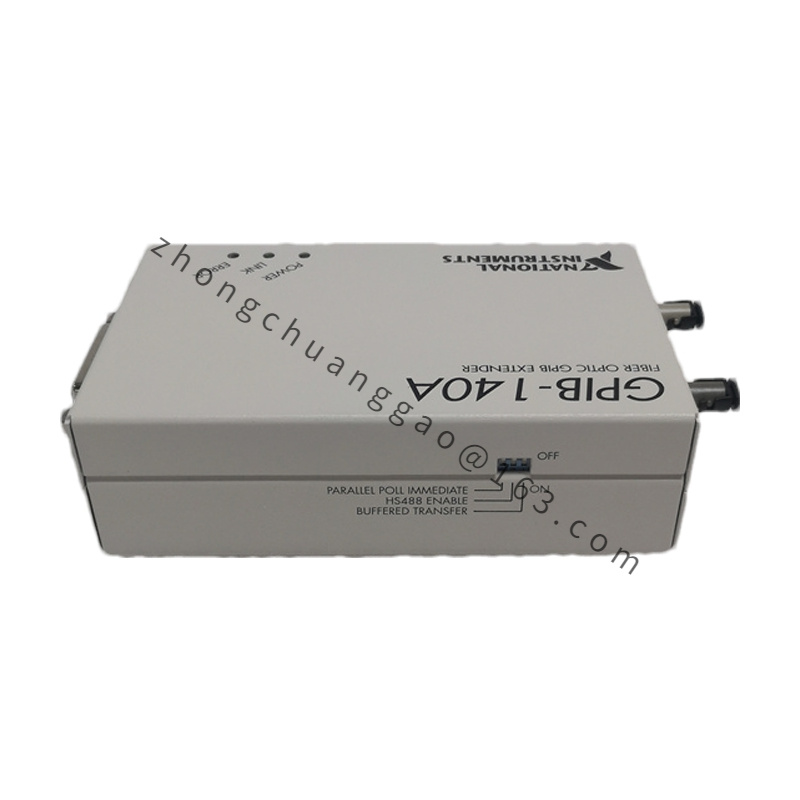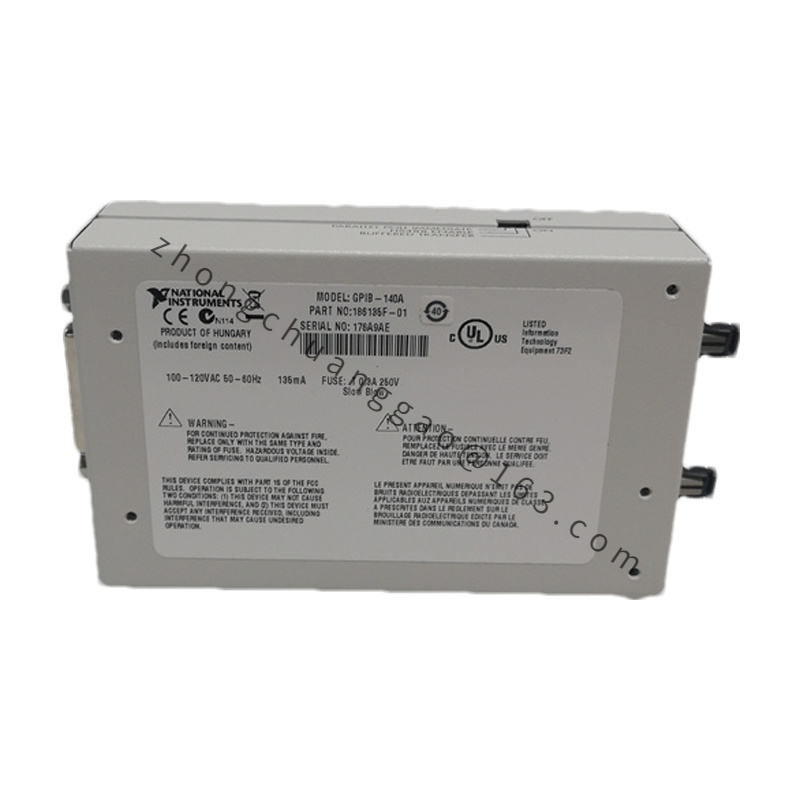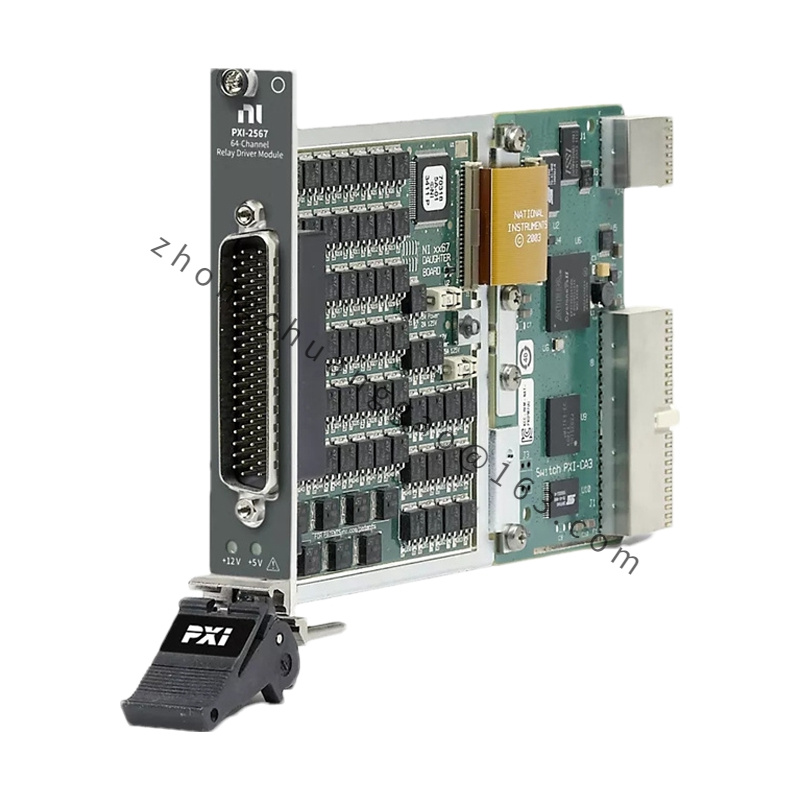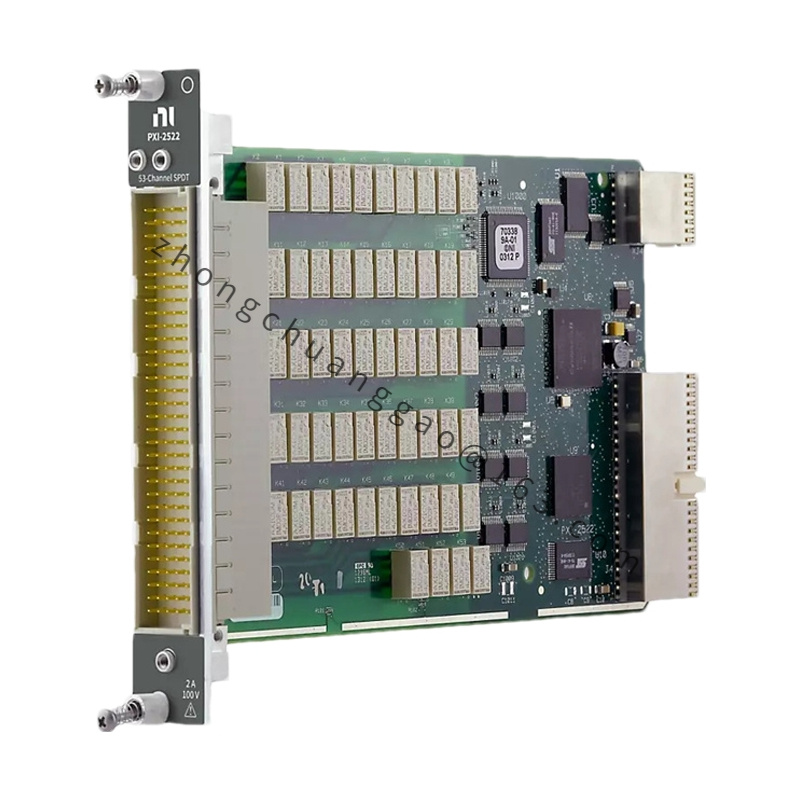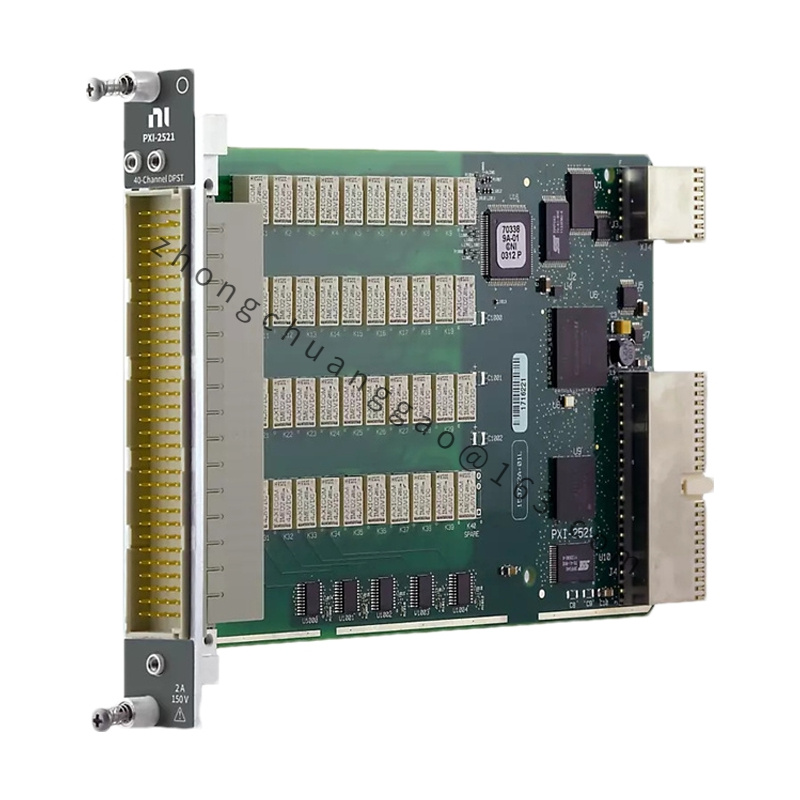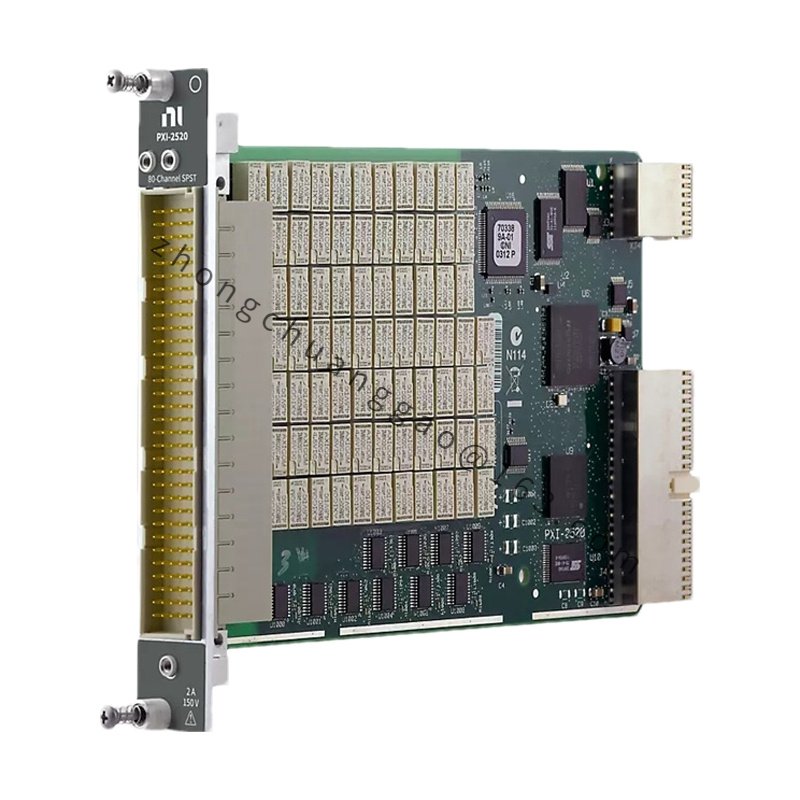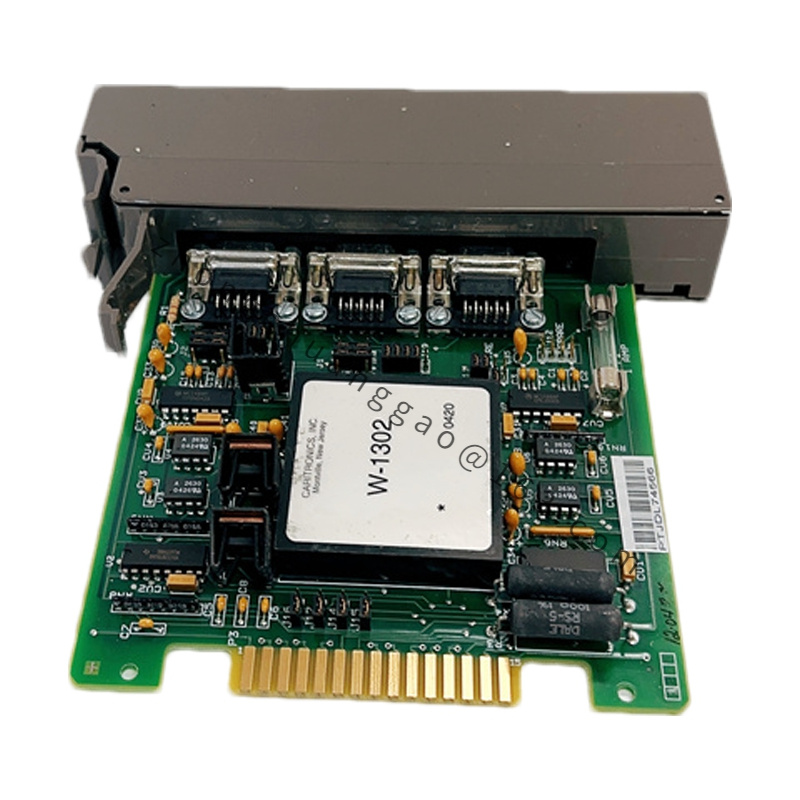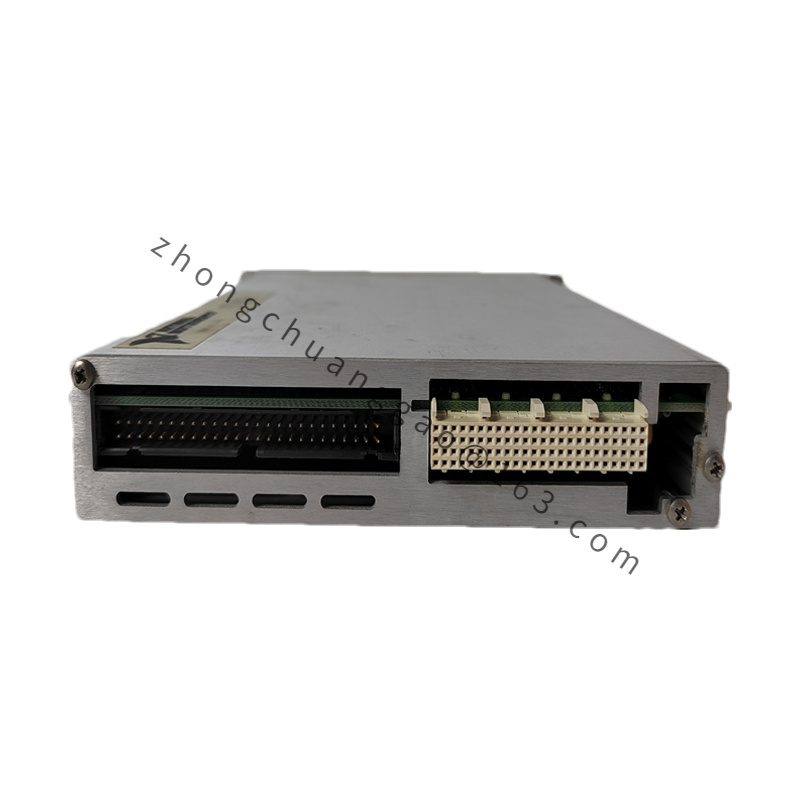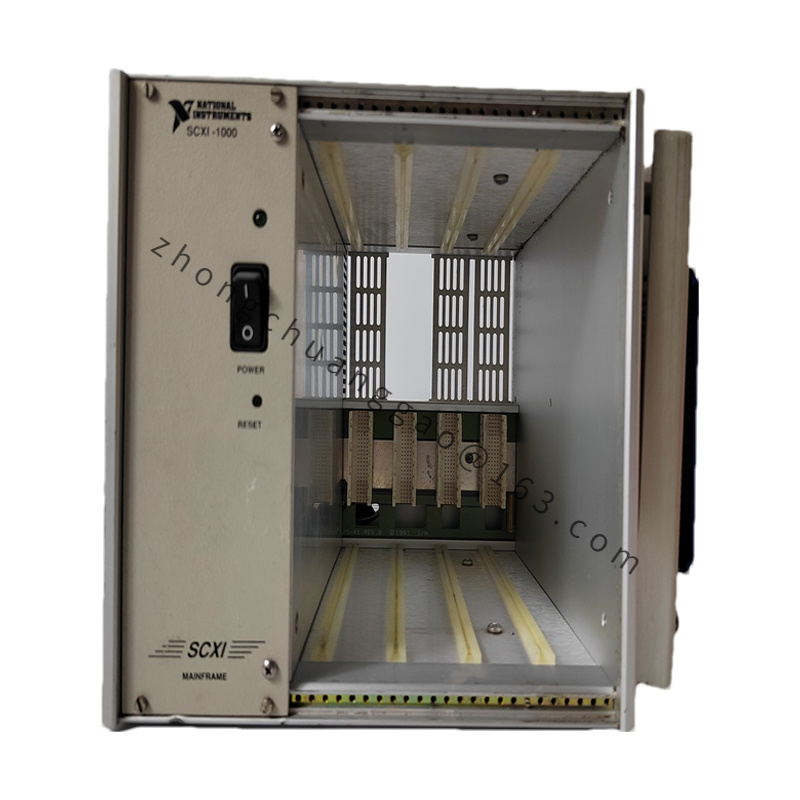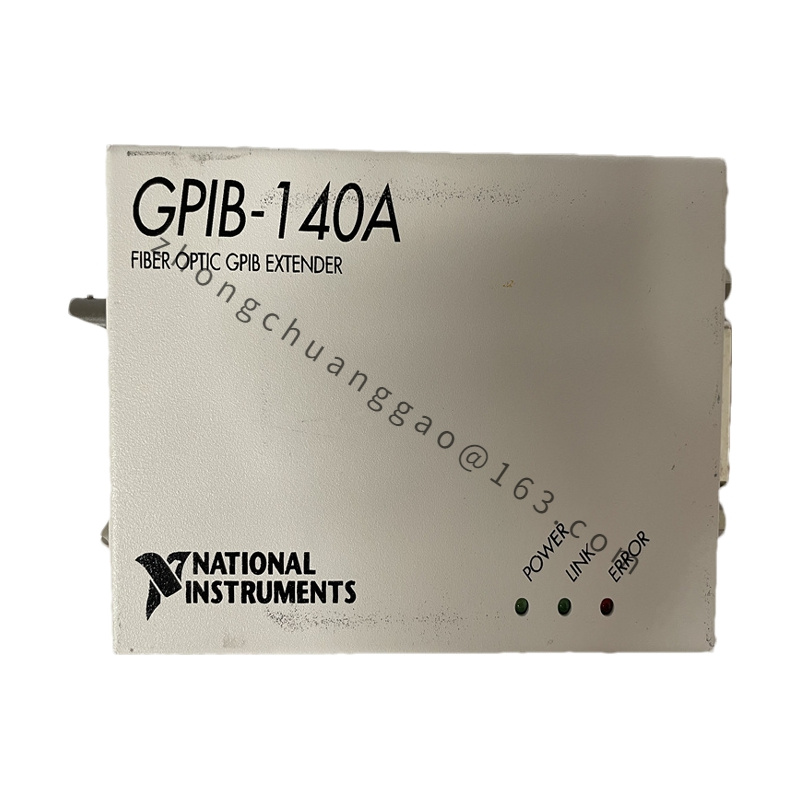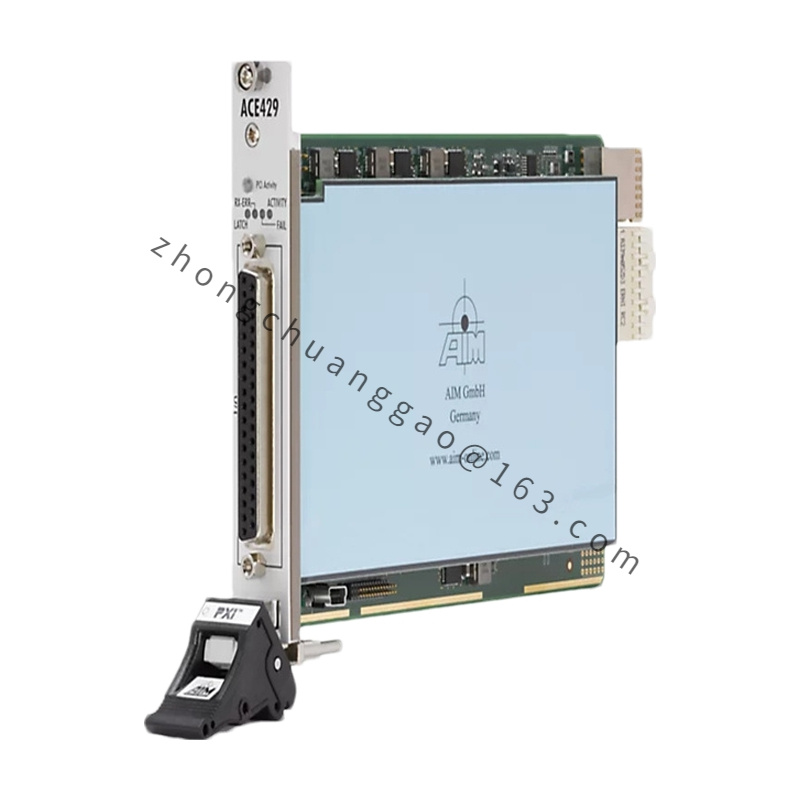NI GPIB-140A
The NI GPIB-140A is a fiber optic extender designed by National Instruments to extend the distance capabilities of the GPIB (General Purpose Interface Bus) system. This device allows users to extend the GPIB bus by up to 1 kilometer, far beyond the 20-meter limit imposed by the IEEE 488 standard, without compromising the integrity of the data transmission or requiring any software modifications.
Detailed content
Key Technical Specifications:
- Data Transfer Rate: The GPIB-140A supports data transfer rates of up to 1.1 Mb/s under the IEEE 488.1 protocol and 2.8 Mb/s under the HS488 protocol.
- Compatibility: It is fully compatible with both IEEE 488.1 and IEEE 488.2 standards, ensuring seamless integration with existing GPIB systems.
- Connection Type: The extender uses fiber optic connections, which not only support the extended range but also offer improved bandwidth and signal integrity compared to traditional copper cables.
- Buffered Transmission: This device employs buffered transmission technology to maintain high data integrity during extended transfers.
Features and Benefits:
- Long-Distance Extension: The GPIB-140A eliminates the cable length and device load limitations of traditional GPIB setups, enabling a total system length of up to 1 km.
- Ease of Use: Installation is straightforward and does not require any additional hardware beyond the extenders themselves. The device is software-transparent, meaning it requires no modifications to existing software applications.
- High-Speed Communication: Ideal for applications requiring rapid data acquisition and instrument control, the GPIB-140A’s high-speed data transfer capabilities ensure efficient communication in complex setups.
Applications:
The GPIB-140A is particularly useful in laboratory environments, large industrial setups, or any scenario where instruments are spread over a significant distance. It is beneficial in situations where maintaining high-speed data transmission over long distances is crucial, such as automated testing systems or complex measurement setups.

